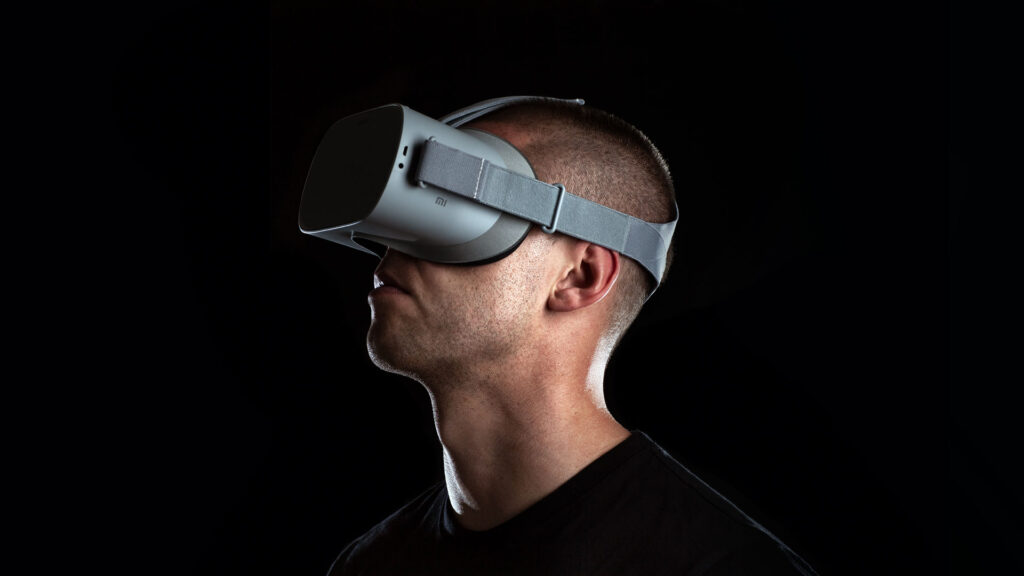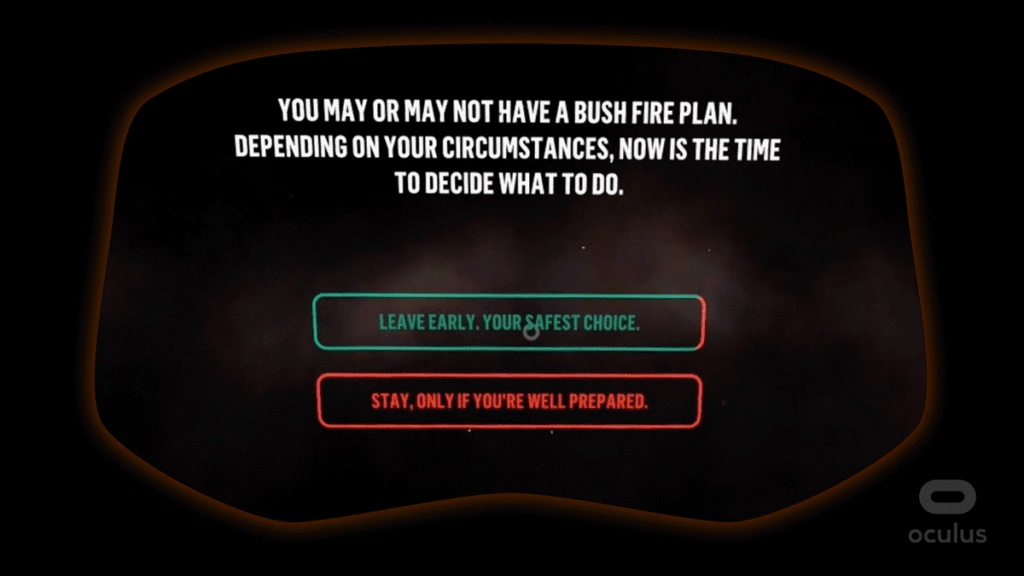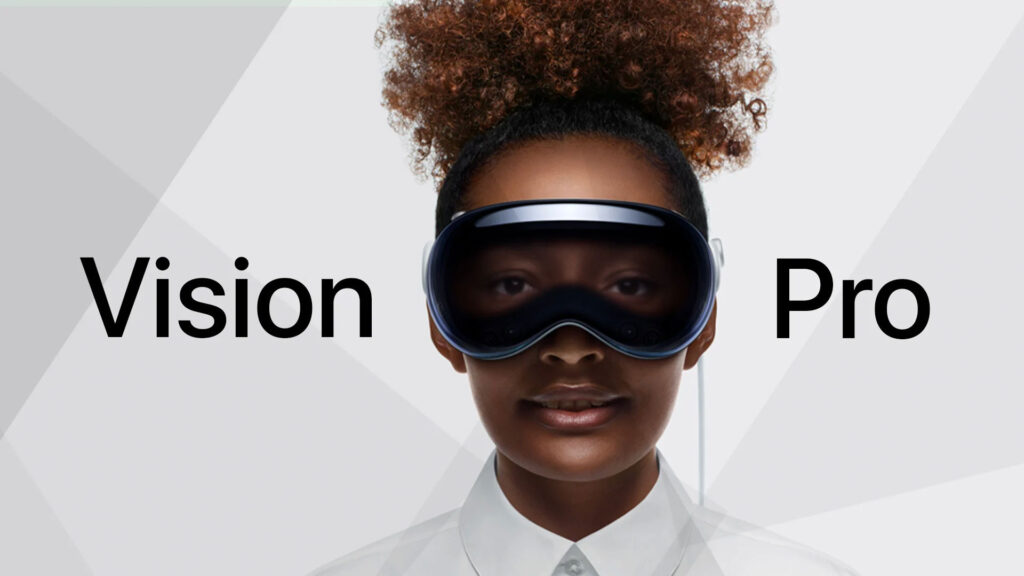Virtual Reality (VR) has evolved from a futuristic concept to a practical tool that can educate, inform, and drive behavioural change. The NSW Rural Fire Service (RFS) recently leveraged this technology in their project ‘A Very Real Experience,’ a VR initiative designed to educate the public about bush fire safety.
This blog explores what VR is, how it was utilised in this project, and the future potential of VR technology, including cutting-edge advancements like Apple’s Vision Pro.
Virtual reality immerses users in a digitally created environment, allowing them to interact with and explore the virtual world as if it were real. This is achieved through VR headsets that display 3D images and follow the user’s head movements to create a sense of presence within the scene. The combination of visual, auditory, and sometimes even tactile feedback makes the experience incredibly realistic.


‘A Very Real Experience,’ a unique collaboration between the NSW RFS and The Brand Pool, was not just another VR project. It was a groundbreaking initiative to educate the public on bush fire preparation through an engaging and immersive VR experience.
The project was developed before the devastating 2019 bushfire season, at a time when the majority of the community had little past experience or appreciation of the potential dangers of bushfires. This created a significant opportunity for meaningful education.
Participants donned VR headsets and were transported into a lifelike bush fire scenario where they had to make a decision about their bush fire survival plan. Faced with choices such as: “Leave early, the safest choice,” or “Stay and defend but only if you are prepared,” participants experienced the consequences of their decisions playing out as the bush fire draws ever closer.
This simulation allowed them to witness the dangers of bush fires, the stress of making quick decisions in emergency situations and the consequences of being unprepared, all within a controlled and safe ‘virtual’ environment. The interactive nature of VR ensured that the educational content was not just seen or heard but experienced, making the lessons more impactful and memorable.
Through this project, VR demonstrated its potential beyond entertainment, showcasing its ability to educate effectively and drive meaningful behaviour change. The participants were more likely to retain the information and apply it by making a comprehensive bush fire survival plan, thanks to the immersive learning environment.
Virtual reality is more than a novelty; it is a powerful educational tool. Its ability to create immersive experiences makes learning more engaging and effective. For example, VR can simulate real-world scenarios that might be too dangerous, expensive, or impractical to recreate in real life.
In the context of bush fire education, virtual reality (VR) allows users to experience the stress and intensity of an approaching bushfire without any real risk. This helps users learn the importance of having a robust fire plan, preparing their home, and understanding the impact of their actions in a safe and controlled environment. This hands-on approach is proven to enhance learning outcomes and retention rates.
Moreover, VR can drive behavioural change by creating emotional connections with the content. When users are immersed in a virtual environment, they are more likely to empathise with the scenarios presented and take the lessons to heart. This can lead to more responsible and informed behaviour in real life.


The future of VR is bright, with continuous advancements in technology making it more accessible and effective. Current VR headsets offer impressive visuals and improved user experiences, but new innovations promise even more.
Apple’s Vision Pro, for instance, represents the next generation of VR technology. Combining augmented reality (AR) and VR, this headset promises a higher resolution, better spatial audio, and advanced hand tracking. Such features can enhance educational experiences by making them even more interactive and realistic.


Other notable advancements include lighter and more comfortable headsets, better graphics processing, and more intuitive interfaces. These improvements will make VR more appealing for educational purposes, allowing users to engage deeply with content in ways traditional methods cannot match.
The ‘A Very Real Experience’ project by the NSW RFS illustrates the profound impact VR can have as an educational tool. As VR technology continues to advance, its potential for driving behaviour change and enhancing learning experiences will only grow. Innovations like Apple’s Vision Pro point to a future where VR is seamlessly integrated into our daily lives, offering unprecedented opportunities for education and beyond.
Virtual reality is here to stay, and its ability to transform how we learn and interact with the world around us is just beginning to be realised.
Awabakal Country
PO Box 1695
Newcastle 2300
New South Wales
Australia
Wadawurrung Country
Surf Coast Shire
Victoria
Australia
We acknowledge that we work on the lands of the Awabakal and Wadawurrung nations. We wish to pay respect to their Elders – past, present and future – and acknowledge the important role all Aboriginal and Torres Strait Islander people continue to play within our region and all of Australia.
Awabakal Country
PO Box 1695
Newcastle 2300
New South Wales
Australia
Wadawurrung Country
Surf Coast Shire
Victoria
Australia
We acknowledge that we work on the lands of the Awabakal and Wadawurrung nations. We wish to pay respect to their Elders – past, present and future – and acknowledge the important role all Aboriginal and Torres Straight Islander people continue to play within our region and all of Australia.


Sign up to our newsletter and dive into great content.